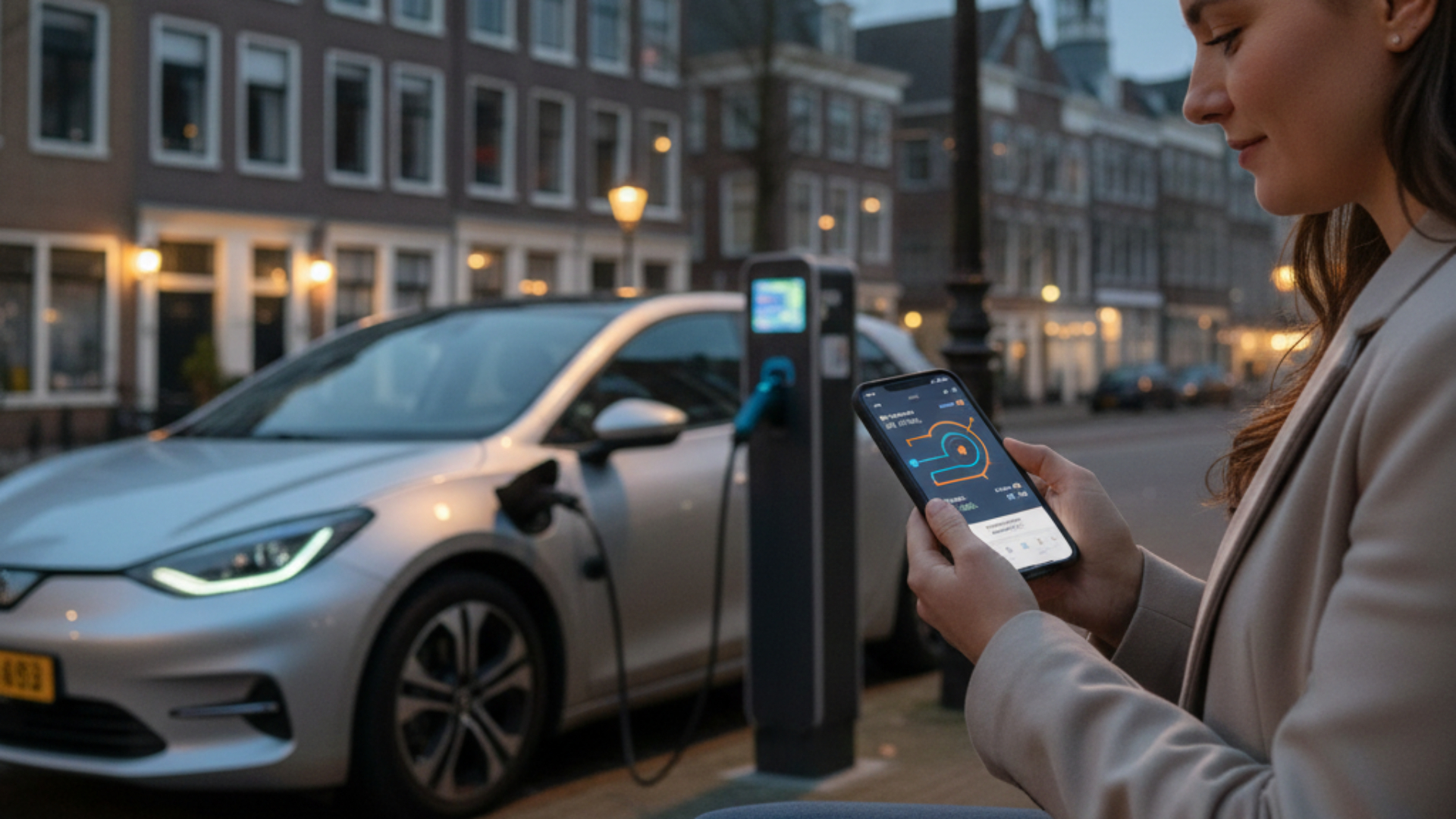How does a bi-directional charging station work?
Bidirectional charging means that you not only transfer power from the grid to your electric car’s battery, but also the other way around. You can then use your car as a home battery and outlet to power appliances – lights, heating, household appliances at home or, for example, during your vacation, your electric barbecue or e-bike(vehicle-to-load, V2L). However, you can also – with the right charging cable – feed power back into the grid(vehicle-to-grid, V2G) when demand for power is high and the price of power is high. Of course, your electric car must be suitable for bi-directional charging.
Benefits of bi-directional charging
The advantages of bidirectional charging are several. First, cost savings. By charging the battery in your car with power from your solar panels or if the power is cheap, you can use the stored power later at home, so you then use less expensive power.
Second, you are less dependent on the power grid. After all, you can store your own solar power in the car and use it at home when the sun isn’t shining or during increasingly frequent power outages. Your electric car is then not only a means of transportation, but also an energy buffer.
Third benefit is grid support. Because such cars can act as a buffer, they can help reduce peak loads on the grid and better accommodate renewable energy (solar, wind).
Is a bi-directional charging station different from a regular charging station?
Yes! A conventional charging station is designed to feed mains power to the car. A two-way charging station also allows you to send power back from the car’s battery to your home or the grid.
If you’re looking for a bi-directional charge point, you’ll have to pick one yourself for home installation – public bi-directional charge points are still in the pilot phase. An installer can tell you exactly which charge points are bidirectional. In any case, the manufacturer will mention “bi-directional,” “V2G-ready,” “V2H,” “V2L” or “Vehicle to Grid/Home” on the nameplate or in the specifications.
How do you operate a two-way charging station?
Most of the operations for a two-way charging station are similar to those for charging at a normal charging station. The difference is that you have additional choices – but you can also have the system operate automatically.
- Your car must be capable of bi-directional charging – not all electric cars are.
- You connect the charging cable to the charging jack in your car, just like normal charging.
- Through the charge point app or the management system, you can set whether you want to charge or discharge (feed-in) and whether this should happen automatically based on certain criteria you can set, such as home load, tariff or only for emergency power.
- The two-way home charging point is integrated with the electricity meter or home installation, so that charging and feed-in are monitored – an extra step on top of simple charging.

Can you charge bidirectionally only at home?
For now, you can only charge at home, although there are pilot projects for public two-way charging. The necessary hardware and software standards and protocols are under development, but the legal basis for application in practice is still lacking. However, new European regulations require public charging points to be technically capable of bi-directional charging from 2027.
For home, the situation is better, but even there the number of two-way charging points is still limited.
Do you need a special charging card for two-way charging?
For normal charging, you use a charging card or app for public charging stations. For bi-directional charging, basically the same will apply: you have to register, activate your account and log in through a provider. Additional conditions may include a dynamic energy contract or participation in a grid management system for feed-in. You don’t necessarily need a special charging card, but you do need a provider that supports two-way charging. But which one do you choose?
How is the electricity you feed back settled?
When power is fed back through your two-way charge point, the following mechanisms apply:
- Because you consume power from the battery at home (V2H), you take less power from the grid. That translates into lower energy costs.
- If you feed power back to the grid (V2G), the grid operator or energy supplier may offer compensation. However, such schemes are still limited and legislation is not yet in place.
- A smart meter should enable registration.
- Existing tax rules (energy tax, feed-in scheme) affect the “profitability” of two-way charging and feed-in power.
Where can you find bi-directional charging stations?
Public bi-directional charging stations are still very rare in the Netherlands. There are only pilot projects, for example in Utrecht.
For installation of a (bi-directional) charge point at home, you can turn to specialized providers of ‘V2H-/V2G-ready’ charge points. According to various sources, the prices for a bi-directional charging station are still quite high – from around 4,000 to more than 6,000 euros, excluding installation. You can, of course, choose to buy. But sometimes rental/lease of a charge point is also possible. Because the technology is still specialized, professional advice and installation by a certified installer is essential.
Of course, you can always have a two-way charge point installed, but with a regular electric car you won’t then take advantage of the feed-in feature.
Can you charge bidirectionally with any electric car?
Not every electric car is suitable for bi-directional charging. Your car must be both technically equipped to return power (hardware + software) and communicate with the charging point via the appropriate protocol (such as ISO 15118-20).
Cars capable of bi-directional charging are not many yet. Consider the Alpine A290, the
Interesting for the near future
Bidirectional charging is an interesting option for owners of a suitable electric model. Then you can not only store cheap power in your car battery, but also use it for your electrical appliances – at home or on the road – and even feed it back into the grid. This will reduce your energy costs, make you more independent of the electricity grid, and even contribute to the demand for electricity.
But don’t forget that your electric car must be equipped with the right technology to make feed-in possible anyway.


